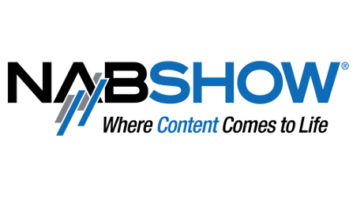Expect the “digital dashboard” to be a focus of even more attention this year at the fall Radio Show in Austin.

Jacobs Media President Fred Jacobs will talk about the findings of a recent NAB study and how radio professionals can optimize the in-car presence of their stations. We asked him about it.
Radio World: How was this study conducted and what did it seek to discover, exactly?
Fred Jacobs: The NAB initiated a dashboard audit in three markets. The goal was to better understand how radio stations are displayed in car dashboards — both RDS and HD Radio equipped vehicles. The impetus behind the audit was to assess the current state of radio displays, and to create best practices standards to ensure the industry optimizes its dashboard displays. This is important at this time because the competitive landscape is changing and the “table stakes” are higher in terms of the experience other content providers offer.
The audit found there’s room for improvement for broadcast radio, both in RDS and HD Radio displays. And it’s critical that — for automakers, car dealers, and of course, consumers — radio looks its best in today’s cars.
RW: How would you grade the progress radio broadcasters have made in the past couple of years about building relationships with carmakers, and securing an ongoing, readily available visual presence in the dashboard?
Jacobs: The issue is on the broadcast radio industry’s radar screen. And progress has been made, especially with HD Radio, as well as NextRadio and iHeartRadio. While automakers are green-lighting many options in their dashboards — Apple and Google’s ecosystems, as well as smartphone content — it’s essential that broadcast radio maintain its dominant position in cars. Last spring, Ford had a booth at the NAB, and that’s part of a larger SmartDeviceLink software effort that includes Toyota, Subaru, Mazda, and others. The NAB has some exciting outreach initiative plans with the auto industry that will take shape over the next several months.
RW: How far off are truly autonomous cars; and what if anything should radio broadcasters be thinking or doing with that future in mind?
Jacobs: They’re closer than most people think, but it will likely happen in ride sharing or car sharing services first, and even then, only in certain markets. The opening keynote of the Radio Show features the CMO of Avis Budget who recently signed a deal to manage Waymo’s (Google’s autonomous company) fleet, so we’ll be listening closely.
When “drivers” have their eyes and hands-free (and there’s debate about how much attention will be necessary), they can focus their attention on just about anything. It is important radio broadcasters focus on creating content that is essential and entertaining, ensuring that passengers in autonomous cars will seek out radio’s personalities, news and information, and other assets that include podcasts and video. But even the automakers and companies like Uber and Waymo who are involved in the space don’t know exactly what the passenger experience will look like in driverless cars.
RW: You conduct regular and detailed research into platforms radio listeners are using to consume their content. If there was one lesson or one surprising finding that you’d like managers to keep in mind, what would it be?
Jacobs: Do your homework. Make sure you understand your audience, especially their usage of gadget and devices. It is no longer enough to create great content. It is essential to be sure it’s available on the distribution outlets that matter to consumers. Broadcasters have limits on their human and financial resources, so research is necessary to understand the larger challenge and the larger opportunity.
RW: What else should radio managers know about this topic?
Jacobs: You don’t just compete against other radio stations anymore. You compete with everybody. Expanding the strategic lens to study the larger competitive challenge is key to surviving and thriving in an accelerated media and technology environment.
Jacobs is among several participants featured in the session “Radio’s New Strategies and New Platforms” on Wednesday Sept. 6 at the Radio Show. Credited for creating and popularizing the classic rock radio format, he launched Jacobs Media in 1983. Prior, he designed and managed research projects for Frank N. Magid Associates, and was director of radio research for the ABC-FM owned-and-operated radio stations and as program director for WRIF(FM) in Detroit.











